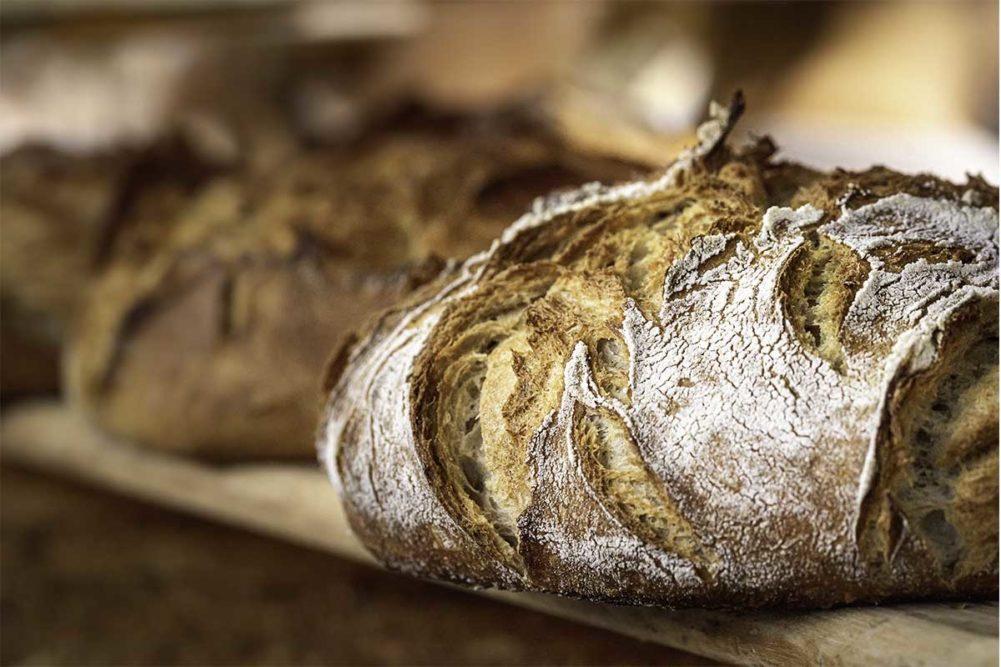To get the most out of enzymes’ functionality, bakers would benefit from looking at how an enzyme blend works together as well as within the formulation.
“By taking a single ingredient approach versus a holistic approach, formulas may not be optimized to their full potential,” explained Ashley Beech, senior application technologist, bakery enzymes, IFF Nutrition & Biosciences.
A holistic approach allows bakers to use a custom enzyme solution that can do more than just provide label-friendly replacement for conventional ingredients.
“An example would be a baguette producer that wanted to eliminate traditional emulsifiers,” Ms. Beech said. “By taking a holistic approach, their supplier was able to not only provide an enzyme solution that matched the loaf volume of the emulsifier but also create a blend that helped with machineability and crust color.”
Bakers must look at both intrinsic and external variables that will impact enzyme performance.
“Intrinsic factors are those that are characteristic of the food itself, including moisture content, pH, biological structure, naturally occurring antimicrobials, for example,” explained Richie Pigott, vice president of business development, North American enzymes, Kerry.
“Extrinsic factors are those that refer to the surrounding environment — things like processing, packaging, storage and distribution.”
On the formulation side, that means ensuring there aren’t redundancies of functionality with the enzymes being used as well as accounting for other ingredients that may be needed to optimize functionality.
“Having an overall understanding of the role of each ingredient helps selecting the right solution needed to adjust or improve, depending on the level of conditioning that is already built in that formula,” said Luc Casavant, application director, Lallemand Baking. “In general, knowledge about the formula revision status, what was already optimized or not, will also determine the selection of the right and adequate solution.”
First, bakers must understand the enzymes in their formulations and the functions they provide to prevent redundancies, then try to create synergies between them if possible. Troy Boutte, vice president of innovation, AB Mauri North America, said there are only a few true synergies among enzymes, but by understanding what each one brings to the table, bakers can eliminate unnecessary ingredients and get the most out of their formula.
It’s not just about avoiding redundancies, however. Enzymes can influence each other as they break down, as explained by Richard Leboucher, director of R&D, bakery, Puratos.
“Although each enzyme has a very specific action, each action could stimulate the effectiveness of another enzyme by producing the substrate that the other enzyme works on,” he said. “So understanding exactly what enzymes are present in the formula and how they work is essential to get the optimum performance.”
Next, consider the way in which these enzymes or blends interact with the other ingredients whether it’s a staple like water or flour or another functional ingredient giving the enzyme a helping hand.
“When starting out on the clean label journey, there will be some applications — typically whole wheat, multigrain or high-fiber breads — where enzymes alone may not match the functionality of traditional strengtheners such as DATEM,” said Jesse Stinson, director, RD&A, Corbion. “In these cases, additional clean label solutions can be considered, including lecithins, hydrocolloids or gluten.”
Bakers may also need to adjust based on the enzyme and what it’s trying to accomplish as well as its optimum environment, Mr. Hinds said. Flexibility in the rest of the formulation is critical.
“For example, if you are using enzymes to reduce the amount of gluten in your formula, you will need to take into account the amount of water gluten will absorb in your dough,” he said. “The enzymes will not need the same amount of water to hydrate. If you do not cut water out of the formula you will end up over-absorbed.”
The processing side of the equation, however, cannot be ignored as enzymes are sensitive to changes in their environment. Mary Thomas, senior R&D manager, Lesaffre, pointed out that not only will the amount of water need to be evaluated but also mixing time. The oven is also a key step when it comes to using enzymes.
“Internal baking temperature and processing times need to be optimally determined to ensure enzymes are no longer active following baking,” she said.
By exploring the formulation and process as a whole, bakers can get the most functionality out of their enzymes and a label-friendly solution.
This article is an excerpt from the May 2021 issue of Baking & Snack. To read the entire feature on Enzymes, click here.






